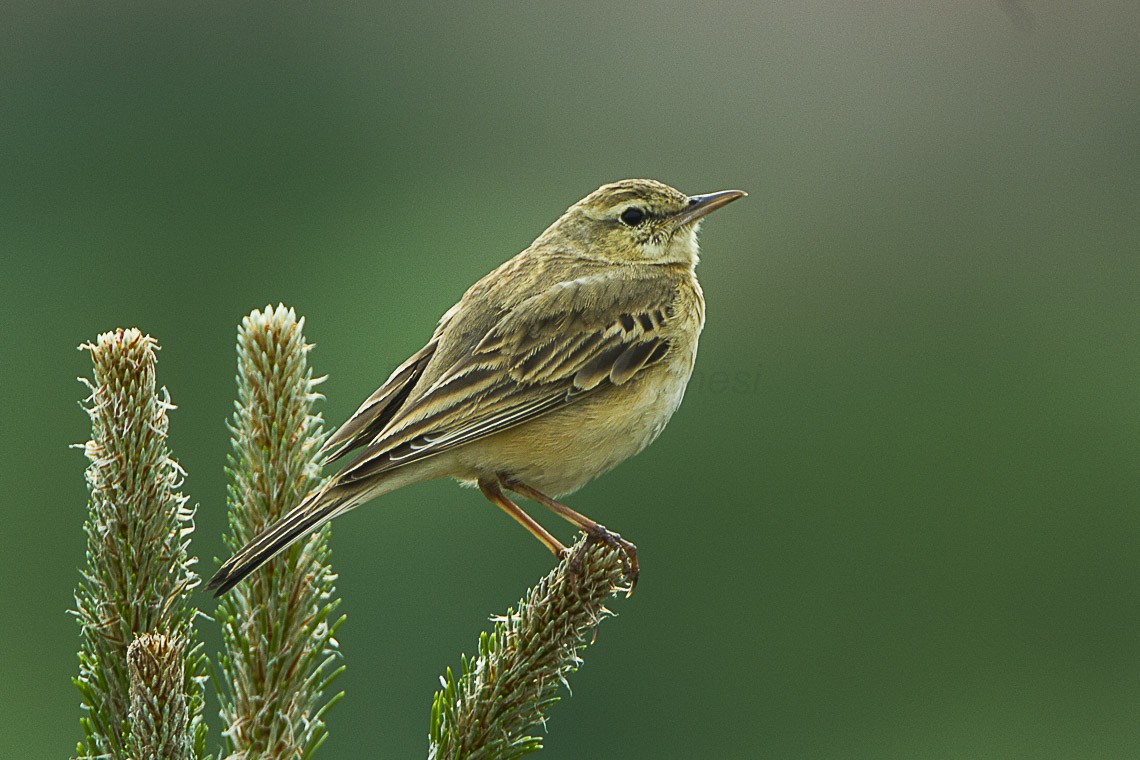Tawny Pipit
A species of Pipits Scientific name : Anthus campestris Genus : Pipits
Tawny Pipit, A species of Pipits
Botanical name: Anthus campestris
Genus: Pipits
Content
Description General Info
 Photo By Francesco Veronesi , used under CC-BY-SA-2.0 /Cropped and compressed from original
Photo By Francesco Veronesi , used under CC-BY-SA-2.0 /Cropped and compressed from original Description
The tawny pipit (Anthus campestris) is a medium-large passerine bird which breeds in much of the central Palearctic from northwest Africa and Portugal to Central Siberia and on to Inner Mongolia. It is a migrant moving in winter to tropical Africa and the Indian Subcontinent. The scientific name is from Latin. Anthus is the name for a small bird of grasslands, and the specific campestris means "of the fields". This is a large pipit, 16 centimetres (6.3 in) long with wing-span 25–28 centimetres (9.8–11.0 in), but is an undistinguished looking species on the ground, mainly sandy brown above and pale below. It is very similar to Richard's pipit, but is slightly smaller, has shorter wings, tail and legs and a narrower dark bill. It is also less streaked. Its flight is strong and direct, and it gives a characteristic "schip" call, higher pitched than Richard's. Its song is a short repetition of a loud disyllabic chir-ree chir-ree. In south Asia, in winter some care must be taken to distinguish this from other large pipits which winter or are resident in the area, including Richard's pipit, Blyth's pipit and paddyfield pipit. Tawny pipit is insectivorous, like its relatives. The breeding habitat is dry open country including semi-deserts. The nest is on the ground, with 4-6 eggs being laid. 
Size
17 cm
Nest Placement
Ground
Feeding Habits
Tawny Pipit primarily consumes insects and seeds, plus occasional small vertebrates. Its diet includes grasshoppers, beetles, termites, and locusts. They forage on the ground, running and pecking, occasionally catching flying insects.
Habitat
Tawny Pipit primarily thrives in open, arid environments characterized by sparse vegetation. These birds favor habitats such as sand dunes, sandy heaths, and dry grasslands, as well as human-made areas like gravel pits. They are often found in steppe and semi-desert regions of central and eastern parts of their range, typically selecting areas dotted with dwarf shrubs and low trees that serve as perches for their melodious displays.
Dite type
Insectivorous
General Info
Feeding Habits
Bird food type
Sounds
Call
Recording location: France
Call
Recording location: India
Species Status
Not globally threatened.